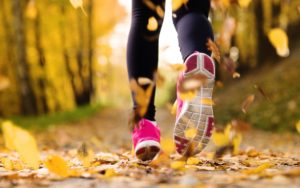RESOURCES
Big Idea: Health
 Health is a Big Idea that impacts everyone. It cuts across science, history, policy, habits, age, gender, culture and geography. As a source for a challenge, health can be contextualized and made meaningful in almost every situation and involve all academic disciplines.
Health is a Big Idea that impacts everyone. It cuts across science, history, policy, habits, age, gender, culture and geography. As a source for a challenge, health can be contextualized and made meaningful in almost every situation and involve all academic disciplines.
In this case, the simple challenge of “Be Healthy” provides a wide variety of opportunities for interdisciplinary and meaningful investigation resulting in positive action. The challenge can be addressed individually or as part of a group of community. It seeks to help learners take control of their health by providing a learning and decision-making framework to sort through at times an overwhelming amount of information and make informed decisions.
ENGAGE
Big Idea: Health
Essential Question: How do we develop a healthy lifestyle?
Challenge: Be Healthy!
Sample Guiding Questions
These are only example questions we encourage you to ask as many personal and contextual questions as possible.
- What does it mean to be healthy?
- What do we need to do to be healthy?
- Why should I take care of my health?
- What are the barriers to being healthy?
- What behaviors positively and negatively impact our health?
- Why is nutrition important?
- What is nutrition?
- How do genetics impact personal health?
- Does exercise improve our health? How and why?
- What is the science behind being healthy?
- What are long-term consequences of being unhealthy?
- What are the habits of healthy people?
- Who is responsible for public health?
- What are local and global health issues?
- What is the role of calories in relationships to health?
- What is the relationship between sleep and health?
- Why is it hard to get healthy food in certain areas?
- What is a food desert?
- Etc.
*Once you brainstorm all of the questions organize and prioritize them.
INVESTIGATE
Guiding Activities and Resources
These are only a set of example activities and resources and the learners will need to evaluate the quality of the content. They are not verified or necessarily supported, just examples. The ones that you choose should be in direct relationship to your specific guiding questions and context. Activities and resources for adults, adolescents, and younger children will be different. The goal is to develop solutions that mean something in your community and are sustainable.
Example Activities
- Compare and contrast different definitions of health. Develop a personal definition for what it means to be healthy.
- Invite a health professional to speak about nutrition and exercise.
- Keep a nutrition diary and track what you eat and drink for a week.
- Keep a diary to track how much exercise you get in one week.
- Keep a diary to track how much sleep you get in one week. Aggregate the class date and develop a graph of the sleep patterns for your class.
- Research how the definition of health has changed over time
- Identify a fad about health and research the validity
- Identify the person in your school who is in charge of nutrition and interview them.
- Etc.
Example Resources
- Cronometer – Track your nutrition, Fitness, and Health Data
- Nutrition: Keeping a Food Diary
- Sleep and health
- Dietary Guidelines 2015 – 20120 Executive Summary
- Food and Diet
- Finding and Evaluating Online Resources about Health
- Ted Talks on Health – A collection of TED Talks (and more) on the topic of health. –
Synthesis
Using the research findings from your Investigations develop a synthesis that demonstrates a clear understanding of the challenge
ACT
Solution Prototypes – Using your research synthesis create multiple ideas for solutions and review each one to make sure your research supports it. Share the prototypes with various stakeholders and get feedback.
Solution – with the feedback from the stakeholders develop one solution that has the most potential for success.
Implement – Develop a plan to implement the solution with the stakeholders and collect data about the impact.
Evaluate – Using quantitative and qualitative measures determine if the solution is valid and what can be improved.
REFLECT, DOCUMENT, AND SHARE
Throughout the experience take time to document the events and reflect on what is happening to build on prior knowledge and identify future questions.
Share what you learned with your local community and the world. Use #CBLWorld on social media.
